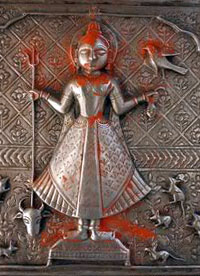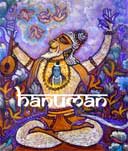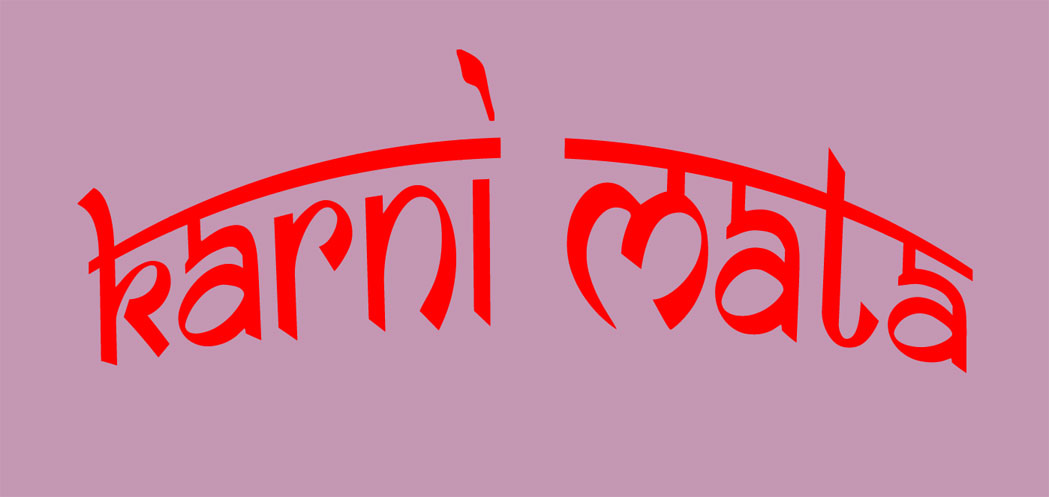 |
|||||||||||||
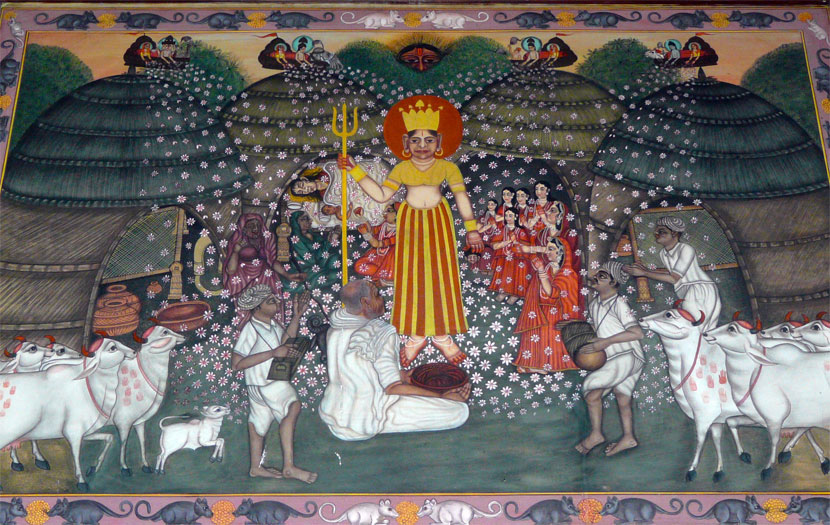 TEMPLE OF KARNI MATA
Of all the temples I have visited in India, the temple of Karni Mata in Bikaner, Rajasthan is by far the strangest. You could almost call it bizarre. Rajasthan itself is one of the most colourful States in India and offers many unique sights to the tourist but the temple of Karni Mata is unique. It lies in a little village called Deshnoke, 30 miles south of Bikaner. The latter along with Jaisalmer is one of the famous desert towns of Rajasthan. The town itself is pretty crowded so we had decided to stay at a beautiful heritage hotel called Gajner Palace out of town. One of the important reasons for staying in Bikaner was to visit the goddess – Karni Devi. The story of this goddess is quite fascinating. On September 20th, 1387 a baby girl was born to a family of Charans in a village called Suvap in Jodhpur district. Her father was known as Mehaji. Charans are the traditional ballad singers of Rajasthan but every state has its own unique ballad singers who go by different names. Their work was go from village to village singing the ancient ballads taken from the great Indian epics, the Ramayana and the Mahabharatha. Mehaji’s wife had given birth to six girls before she conceived Karniji. In those days the birth of a girl was a sorrowful event and when his wife conceived for the seventh time, the father was very anxious that this one would be a son. In the eighth month he engaged two maids to look after his wife and see to her safe delivery but even after ten months she showed no signs of labour! One of the maids was frightened and ran away but the second one remained. The parents were naturally most worried and did not know what to do. One night the mother had a vivid dream in which the goddess Durga appeared to her holding the trident in her hands. She informed her that she need not be afraid and that a portion of her effulgence had already been conceived in her womb and that she would be born at the twenty-first month without any problem. Though the parents were quite distressed, there was nothing much they could do about this since it was the will of the goddess. Traditionally the Charans are worshippers of Shakti, or the Divine Mother mainly in her form as Durga. Eventually the baby was born on the 7th day of the bright fortnight in the month of Aswin – Sept/Oct. She was called Ridhubai. It was only much later after she performed her first miracle that she was renamed, Karni. Needless to say the parents were quite disappointed that the baby was a girl. The mother was most unhappy since everyone who came to see the baby mocked at her at having given birth to seven girls. Nobody would bring any presents for a baby girl. One day Mehaji’s sister came to see the baby. She taunted her sister-in-law and knocked her on her head with bent fingers. Everyone was shocked to see that her fingers remained in that bent position and refused to be straightened out. One day when Ridhubai was five years old, her aunt condescended to bathe her. Innocently the child questioned her about her bent fingers. When she heard the story she took her aunt’s hand in her own and gently stroked it. To everyone’s amazement the fingers straitened themselves and became whole again. Everyone was stunned. Her aunt who had scoffed at her mother now proclaimed that this was not an ordinary child but an incarnation and renamed her, Karni. The mother now told everyone about the wonderful vision she had of the goddess Durga during the eighth month of her pregnancy.
Rao Shekha of Pugal (a chieftain), had heard many tales about the young girl’s extraordinary powers and was desirous of meeting her. Once he was going with an army for battle when he met Karni going to the forest with a lunch box for her father. When he saw her, he dismounted from his horse and bowed low before her and asked for her blessings in the coming battle. She gave her blessings but insisted that he was her guest and he should share her meal. Sheka said doubtingly that his army comprised of about one hundred and fifty people and the little lunch box would hardly suffice for them. She merely smiled and asked all of them to be seated and started serving them herself. All of them had a full meal of yogurt and chappathis and still the container was not empty. Everyone was astonished and Rao Sheka fell at her feet and begged her to bless him. Needless to say he was victorious in his battle. When Karni came of marriageable age her father was anxious to get her married. She herself chose her bridegroom and informed her father that she would marry a person called Deepa who she knew to be an avatar of Lord Shiva. The marriage ceremony was conducted very simply and the party set off for the groom’s house. Very soon they felt very thirsty but did not have enough water for all. Karni was being carried in a palanquin and Deepa was riding beside her. He parted the curtains and asked her what they should do. She told him to look behind and there to his surprise was a pond of clear water. While the attendants were drinking their fill, he brought some water to the palanquin. Karni now showed him her form as Durga, seated on a lion. He was naturally surprised at the vision. She now told him her story and then resumed her original form and accepted the water he had brought for her. 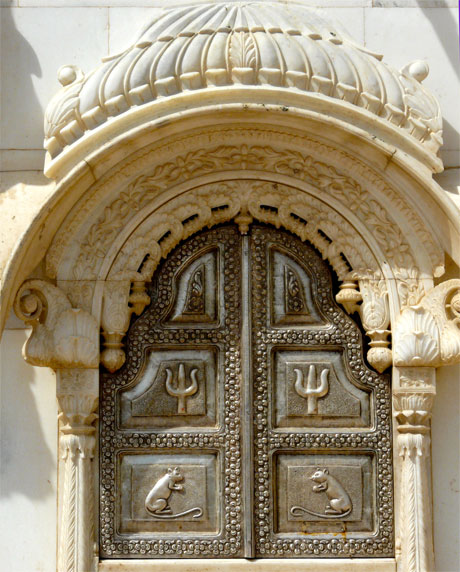 They continued on their way and came upon a Rajput bride, weeping beside the dead body of her husband. Karni stopped the entourage and got out and asked the woman the reason for her grief. She replied that her husband had been bitten by a poisonous snake and now lay dead. Karni’s heart was moved by the distress of the bride. She went close to the corpse and said, “Stand up Oh brave Rajput!” Immediately he got up as if from sleep. He did not know what had happened to him and when his wife explained they both fell at Karni’s feet and thanked her. Soon they reached another village where a carpenter, Anada requested her to stay in his home during the night. She consented and stayed there. Before she left his mother asked for a boon for her son. She begged her for a mantra which would save him from all dangers. Karniji asked him to remember her name when he was in danger and she would save him. A couple of days later Anada, having repaired the wood work inside a well, proceeded to come up using a leather rope. Before he reached the top, the leather rope broke and he felt himself falling into the well. He called out to Kanrniji in deep anguish and immediately saw a double headed snake coming and catching the two ends of the rope, thus allowing him to clamber safely to the top. The snake disappeared as soon as he reached safety. Anada left his village and shifted to Deshnoke after Karniji settled there. The party then left the village and Karniji announced that the place where they would reach at nightfall would be the place which she would make her own. The Sri Karniji temple of today is only 2 kms from this place. Next morning after milking the cows, she drove a branch of the Khejari tree into the earth and started using it as a pillar for churning her curd. She sprinkled some curd on the dry branch which sprang into bloom with young and tender leaves. This tree is still alive and growing. 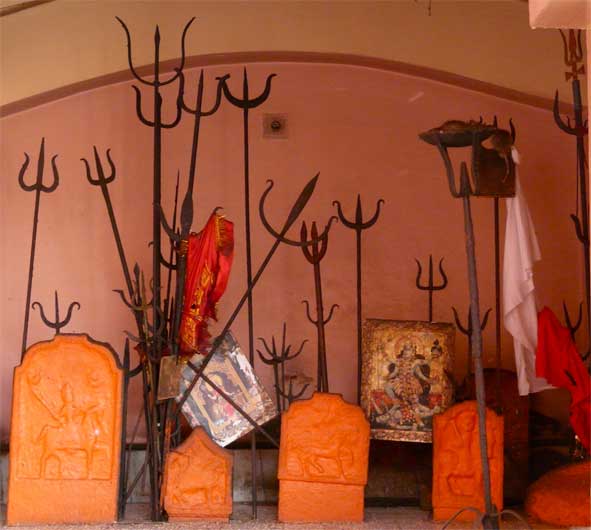 The place where she had decided to reside was full of grass and bushes and had been used as a grazing ground for horses. Karni decided that that this was a good place for her to settle down with her people and cows. The ruler of that place was a wicked man called Kanha. He ordered his vassals to disperse the cows and drive away the party. They came with sticks and stones and assaulted Karni’s party. She merely looked at them and said, “Get away you jackals!” Immediately all of them turned into jackals and ran off howling to the forest. The next morning when she was doing her puja, Kanha came riding on an elephant. He abused her and ordered her to clear out. After finishing her puja, Karni came out and Kanha ordered her to leave at once. Karni replied that she would do so if he was able to load her box on the cart. Kanha’s men did their best but they could not shift the box. The elephant was now called but even he could not move the box an inch. However Kanha continued to threaten and abuse at her. She drew a line on the ground with a stick and forbade him to cross the line on pain of death. Kanha defiantly rode over the line on his horse but suddenly a lion appeared out of nowhere and killed him with a blow of his huge paws. After that Karniji and her party continued to live unmolested in that region which later came to be known as Deshnoke. She strictly banned the cutting of trees and wood in and around the village except for funeral purposes for cremation. In fact she is the forerunner of the national parks of today. These fields provided grazing ground for the people and they could also earn their livelihood by picking fruits which were growing in abundance. She also prohibited the brewing of country liquor and the selling of meat. Even today you will not find liquor shops or butchers in this region. Once when Karni went on a visit to Pugal, a pair of terrible dacoits came to Deshnoke and started plundering and killing. They captured the cattle and killed the chief cowherd called Dashrath. They also killed Karni’s favourite bull. One of the young girls then suddenly remembered Karniji and called to her to come to their aid. Karniji appeared immediately, holding aloft the trident in her hand, looking like a veritable Durga. She killed the dacoits and freed the cows. She declared that when a temple would be built for her, Dasrath’s idol would be kept in front of it and an eternal fire would be lit in his remembrance. This is done to this day. As we know Rao Shekha of Pugal was a great devotee of Karniji One day as he was sitting in his audience chamber listening to poetry being recited by famous poets there was a clap of thunder and a bolt of lightening streaked down in a zig-zag right on top of Shekha’s head. Just then he felt as if Karniji was beside him and protecting him with her sari which she threw over his head. He could see nothing but the glow of her sari. All those who were standing near him had seen the bolt of lightening and could not believe that he was still alive. Of course he was the only one who had the vision of Karniji. At Deshnoke, people saw Karniji standing with her sari thrown like an umbrella towards the sky. After this incident Shekha used to go on the 14th day of the bright fortnight of every month to Deshnoke to offer worship to his goddess. 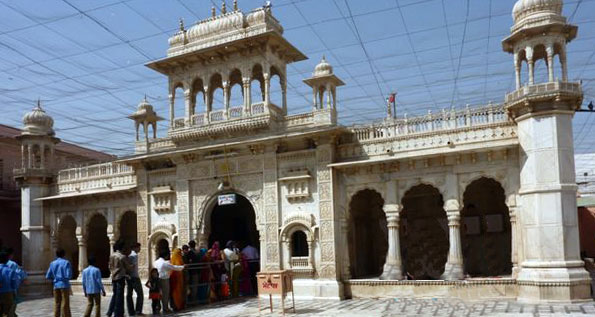 Once one of the scions of that region called Rao Bika came to Karniji and asked for her blessings to establish a new fort. He resided near her and got her constant advice and encouragement in all his undertakings. She knew that he was anxious to build a fort so she chose the spot where it should be built and laid the foundation herself for the Bikaner fort in 1542. Rao Bika installed Karniji as the principal goddess of the state for he firmly believed that the state of Bikaner was her gift to him. Once when Rao Shekha came on his monthly visit to Deshnoke, Karniji proposed that his daughter should marry Rao Bika. However Rao Sheka was reluctant to agree to this proposal. Karniji did not say a word but soon after Shekha was arrested on some charge or other and put behind bars. His wife came crying to Karniji and begged her to save her husband. Karniji said that her husband would be saved if she agreed to his daughter marrying Rao Bika. The mother immediately agreed but wondered as to who would give her daughter away in marriage since her husband was in jail! Karni told her not to worry. It is believed that Karniji took the form of a kite and brought Sheka on her back and carried him to the marriage function and allowed him to give away the bride! Camels were the only means of transport in Rajasthan in those days. Once a caravan was travelling through the desert when one of the men in the party called Chough Bithu found that his camel had broken a leg. The rest of the party were forced to carry on, leaving Bithu behind. They assured him that they would send another camel for him as soon as they reached the next halt. Choughji started calling to Karniji to help him. Suddenly she appeared and told him to get back on the camel that would carry him safely to Deshnoke. He clambered on to the camel who was standing on all fours but immediately after they reached Deshnoke the camel died. He was surprised to find that a slender iron rod had been inserted in the wounded camel’s foot. This iron was later taken out and made into a trident which is still to be found in Karniji’s temple. Once when Karniji was returning home from a visit to the adjacent village she found a weeping girl. When questioned, the girl said that she had hit a calf to try and drive it out of a field and the calf had died. The sin of killing a cow was only next to the sin of killing a Brahmin and girl feared that she would be ostracized by the villagers and banished. Karniji could never bear to see any woman in distress so she laid her holy hands on the calf and told it to rise up. The calf jumped up and started frisking around. Karniji and Deepa had four sons in all. Four of the villages around Deshnoke have been named after them. After the birth of her sons, she became a sannyasini and did not live with her husband. One day the youngest son, Lakhan went to the lake known as Kolayat to attend a fair. Unfortunately he drowned while swimming in the lake. His dead body was carried to Deshnoke on a bullock cart. Karniji took the body and kept it near her in her sanctorum and closed the door for the whole night. In the morning her son revived. The next day she made a strange statement to Yama, the god of death. “No descendent of mine should ever be taken by you!” She declared, “Every descendent of mine shall take a birth as a “kaaba” or mouse and remain in my temple. When the mice die they shall be re-born as members of my family. This will continue for generation after generation and people will revere these mice as my relations and worship them and feed them and they shall get merit thereby!” Henceforth Karniji forbade any of her relations ever to take bath in the lake of Kolayat. They follow this rule to this day and do not even touch the waters of this lake. This is the story of why her temple is filled with mice that run about quite harmlessly. It is considered to be very lucky to see a white mouse since that is supposed to be the goddess herself. 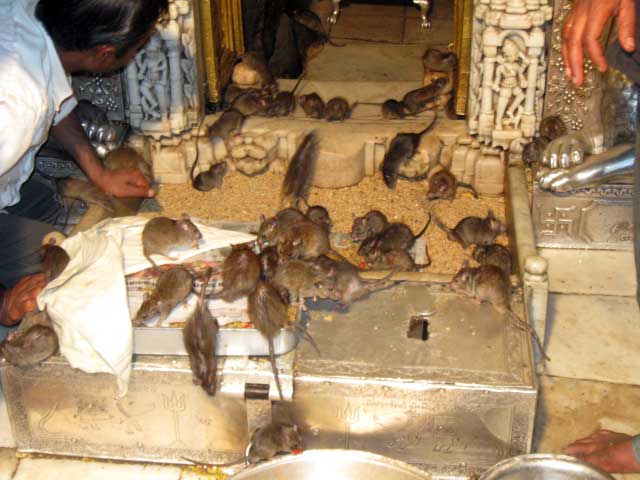 The Rawal Jaitsi of Jaisalmer was suffering from a tumour and decided to go to Deshnoke to get her blessings. When she heard of his tumour, she decided to go there herself and thus forestall his visit. She went with her eldest son and coachman. The Rawal was greatly touched at her kindness in sparing him the pain of the journey. She touched the place of the tumour with her holy hands and cured it. Her son broke down and started to weep uncontrollably. Then a voice spoke from the sky. No mortal can become immortal. The body has to die some day or other. Do not grieve therefore. Go back to Deshnoke and you will find an idol carved by a blind mason who is sleeping in my room, keeping the idol under his head. That idol should be installed in that sanctorum by you.” Her son stopped weeping and set out to carry out his mother’s wishes. He found the idol as described by her and installed it at the sanctorum on the 14th day of the bright fortnight of Chaitra, five days after her Samadhi. This is the place where the present temple of Sri Karniji is situated. From then onwards, the descendents of her four sons have been continuously offering worship to her in that temple. This sanctorum where she used to conduct her worship had been constructed by her. It was a round shaped room made with big stones which were held together without any cement, mud or water. She had decorated the ceiling and roof with wood from the jaal tree which is a very soft wood and not at all durable but by her grace the wood still exists in its pristine state without any signs of decay. The fine marble work of the main gate was done during the reign of Maharajah Ganga Singh. His minister, Sethji engaged a mason called Heerji to make the temple. Heeraji called his brother and a famous mason called Ganga Ram along with many other masons from his village and commenced the formidable task. Each stone was laid with great precision and care. However the masons fell out and the work stopped and Heeraji left the place with his workers. 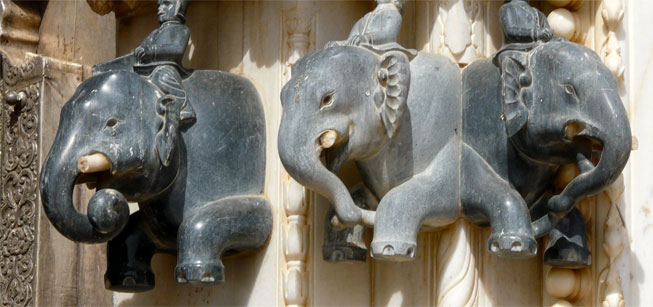 Sethji then called another famous mason and assigned the work to him. But after some time this mason also got confused and left. Thus it remained incomplete for 20 years and Sethji died. Then the former Maharaja of Bikaner, Ganga Singh took up the work and called Heeraji again to come back and finish the work. Heeraji was above seventy years at that time and at first he refused but at the raja’s insistence he returned with his younger brother and started work on the temple afresh. After ten years of labour the main gate of the temple was finished. Much of the work is still unfinished. No one knows why. Maybe it is the desire of the goddess. However the marble work done by the Maharaja is quite outstanding. The idol of Karniji is made of the golden-coloured rocks found in Jaisalmer and was carved by a blind mason of Jaisalmer as she had told her son. It is a very beautiful idol with a crown on her head, ear rings and necklaces. She holds the trident in her left hand under which is the head of a lion. Her right hand holds the head of a man. The lengha (skirt) she wears has natural folds but this is not very visible due to the vermillion with which the idol is covered. The doors of the sanctorum are covered with gold leaf. There are many rooms housing various idols and a kitchen which houses two huge pots named, Saawan and Bhadwa. On festival days, the halwa or Prasad made with 14,000 kgs of wheat is made in these pots and distributed to all the devotees. Of course the mice get a fair share. The birth day of Sri Karniji is the main festival here. It is said that even now people make vows to her and many miracles still take place here. Recently a fire broke out in the ammunition department of the Bikaner army but strangely enough no harm was caused to the town. This again is attributed to the grace of Sri Karniji. 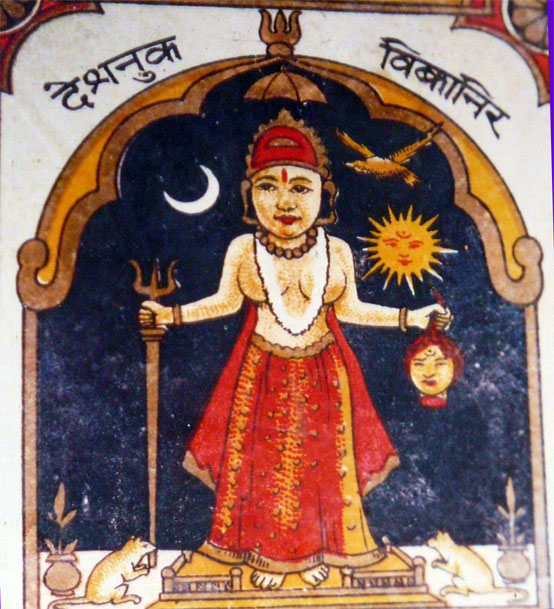 We stood in the queue and went into the sanctorum. We were not allowed to sit or even stand for any length of time since people were pushing from the back. At first Arvind was not allowed to go in since he was a white but afterwards, he was sanctioned by Karniji’s grace. This has happened in many temples I have gone with him and despite the initial obstruction he has always managed to get in. This is not strange considering what a great devotee he is. I was anxious to see the actual idol about which I had heard but unfortunately it was covered with so much of beautiful clothes and ornaments that only her face was visible. It was a strange and beautiful face and I really wanted to sit in a corner and meditate but decided against it since I must admit that I was not too happy at the thought of mice running all over me! However I sat for a short while without closing my eyes and what intrigued me was the fact that the mighty Mother Goddess, has deigned to incarnate herself in so many places and forms in this incredible country of India. Karniji was only another in the long list of goddesses who had incarnated before her. This is indeed a punya bhumi or the Holy Land. Hari Aum Tat Sat 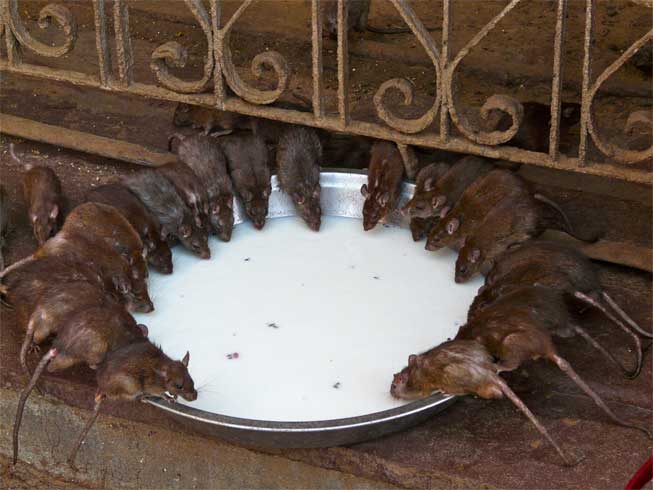
|
